Refer to the exhibits. The Mule application does NOT define any global error handlers.
A web client sends a POST request to the Mule application with this input payload. The File Write operation throws a FILE: CONNECTIVITY error.
What response message is returned to the web client?
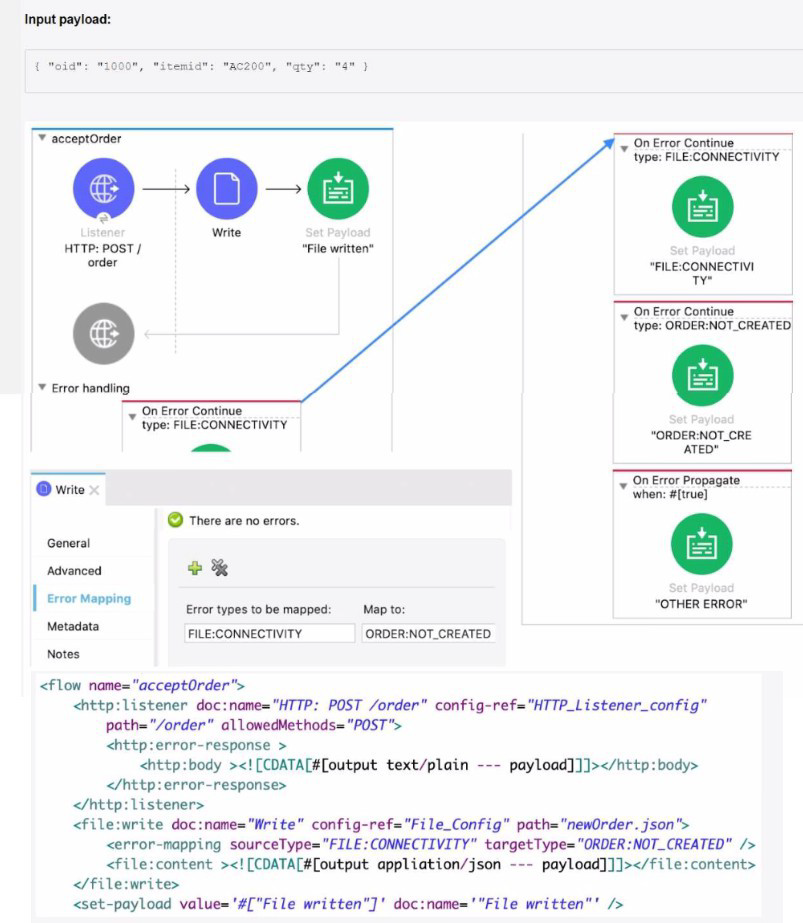
A. "FILE: CONNECTMTV
B. "OTHER ERROR"
C. "File written"
D. "ORDER: NOT CREATED"
In the execution of scatter gather, the "sleep 2 sec" Flow Reference takes about 2 sec to complete, and the "sleep 8 sec" Flow Reference takes about 8 sec to complete.
About how many sec does it take from the Scatter-Gather is called until the "Set Payload" transformer is called?
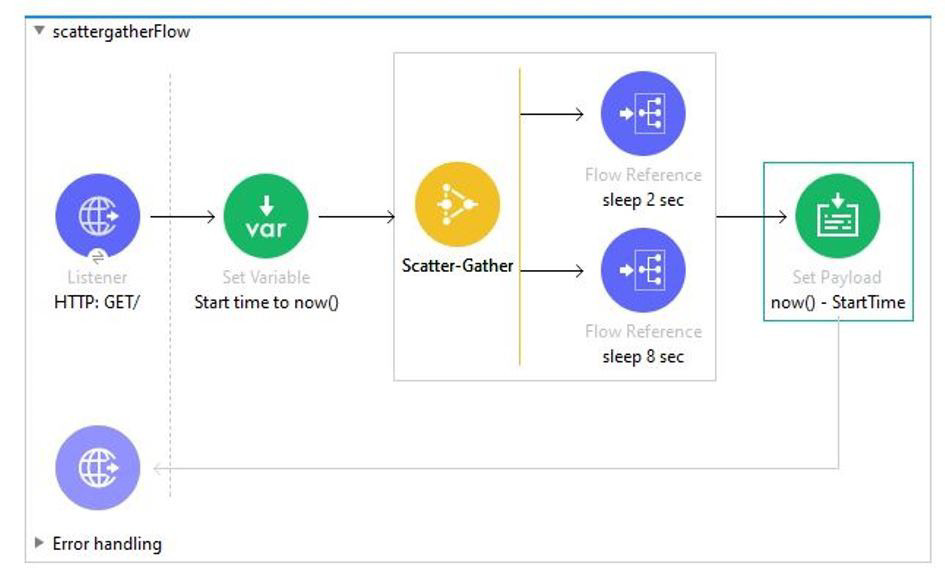
A. 8
B. 0
C. 2
D. 10
Explanation: Correct answer is 8 as events are processed in parallel in case of scatter gather router
How are multiple conditions used in a Choice router to route events?
A. To route the same event to the matched route of EVERY true condition
B. To find the FIRST true condition, then distribute the event to the ONE matched route.
C. None of these
D. To find the FIRST true condition, then route the same event to the matched route and ALL FOLLOWING routes
Explanation:
Choice router finds the FIRST true condition, then distribute the event to the ONE matched route.
The Choice router dynamically routes messages through a flow according to a set of DataWeave expressions that evaluate message content. Each expression is associated with a different routing option. The effect is to add conditional processing to a flow, similar to an if/then/else code block in most programming languages.
Only one of the routes in the Choice router executes, meaning that the first expression that evaluates to true triggers that route’s execution and the others are not checked. If none of the expressions are true, then the default route executes.
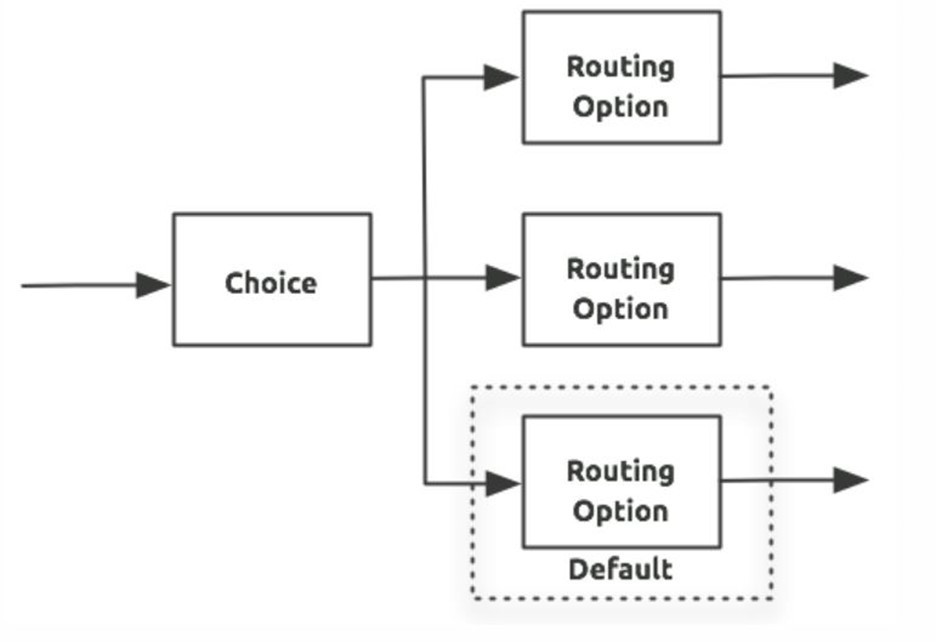
A flow needs to combine and return data from two different data sources. It contains a Database SELECT operation followed by an HTTP Request operation.
What is the method to capture both payloads so the payload from the second request does not overwrite that from the first?
A. Put the Database SELECT operation inside a Cache scope
B. Put the Database SELECT operation inside a Message Enricher scope
C. Nothing, previous payloads are combined into the next payload
D. Save the payload from the Database SELECT operation to a variable
Explanation: Correct answer is Save the payload from the Database SELECT operation to a variable Response from HTTP request will override the payload and hence response of database SELECT can be lost. Best way to preserve is to assign payload of first operation to variable using TransformMessage.
Refer to the exhibit.
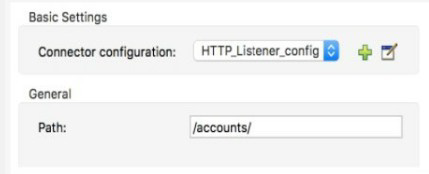 What is the correct syntax to add a customer ID as a URI parameter in an HTTP Listener's path attribute?
What is the correct syntax to add a customer ID as a URI parameter in an HTTP Listener's path attribute?
A. (customerlD)
B. {customerlD}
C. #[customerlD]
D. ${ customerID}
Refer to the exhibits.
 What DataWeave expression transforms the conductorIds array to the XML output?
What DataWeave expression transforms the conductorIds array to the XML output?
A. 1. 1. trains:
2. 2. conductorIds map ((engId, index) ->
3. 3. train: {
4. 4. engineerId: engId
5. 5. }
6. 6. )
B. 1. 1. { trains:
2. 2.
3. 3. conductorIds map ((engId, index) ->
4. 4. train: {
5. 5. engineerId: engId
6. 6. }
7. 7. )
8. 8. }
C. 1. 1. trains:
2. 2. {(
3. 3. conductorIds map ((engId, index) ->
4. 4. train: {
5. 5. engineerId: engId
6. 6. }
7. 7. )
8. 8. )}
D. 1. 1. {( trains:
2. 2.
3. 3. conductorIds map ((engId, index) ->
4. 4. train: {
5. 5. engineerId: engId
6. 6. }
7. 7. )
8. 8. )}
Explanation:
Points to remember:
* XML must have a root element.
* XML only allows one root element
* To avoid multiple root issues, you must create a root element for the XML output, whenever we transform output
* When mapping array elements (JSON or JAVA) to XML, wrap the map operations in {(..)}
-{ } are defining the object
( ) are transforming each element in the array as a key/value pair
* The transformation to XML would fail if the above mentioned considerations were not taken into account.
* Thus the transformation script declares a root element as trains and wraps the data in “{(
)}“.
Whenever you see such type of question, always look out for root element followed by {( )} wrapping map.
I call this a "Wrap The Map" scenario. Hope it would help you remember !
Refer to the exhibit.

The main flow contains a Flow Reference for the child flow.
What values are accessible in the child flow after a web client submits a request to http://localhost:8Q81/order? color=red?
A. payload
B. payload quantity var
C. payload color query param
D. payload quantity var color query param
Explanation:
Flow Reference Component
Flow Reference routes the Mule event to another flow or subflow, executes all processors in the referenced flow, and then routes the event back within the same Mule application. The following diagram shows the order of processing when one flow references another:
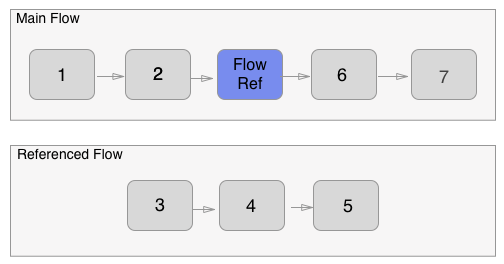
When the main flow is triggered, the Mule event travels through and executes the flow until the event reaches the Flow Reference. The event then travels through and executes the referenced flow from beginning to end, and then returns to the main flow.
This process enables you to treat the entire referenced flow like a single component in your current flow.
Refer to the exhibit.
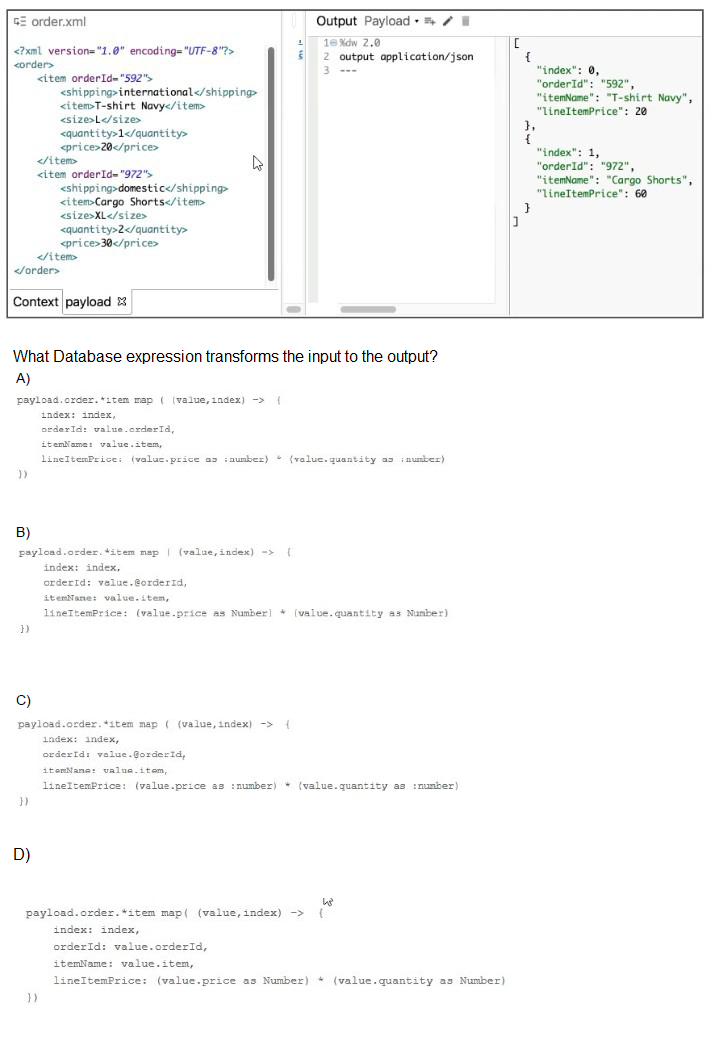
A. Option A
B. Option B
C. Option C
D. Option D
Refer to the exhibits.
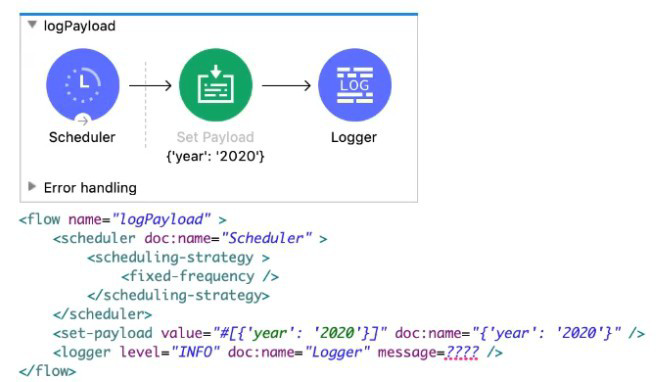
The Set Payload transformer's value is set to {'year': '2020'}.
What message value should be added to the Logger component to output the message 'The year is 2020', without hardcoding 2020?
A. '#[The year is $(pay load .year)]*
B. The year is #[payload.year]'
C. '#[The year is " + paytoad.year]'
D. #["The year is "++ payload.year].
Which out of below is not an asset?
A. Template
B. Connector
C. Exchange
D. Example
Explanation:
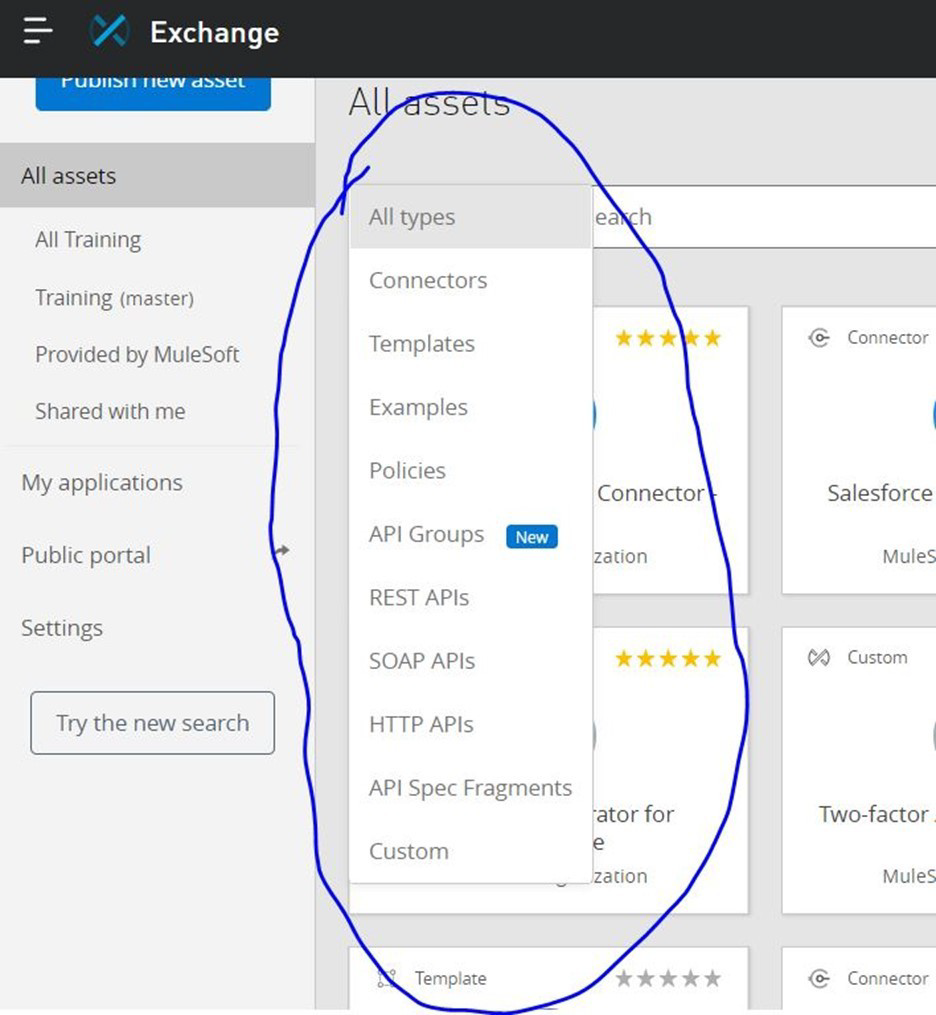
| Page 7 out of 24 Pages |
| Salesforce-MuleSoft-Developer-I Practice Test Home | Previous |